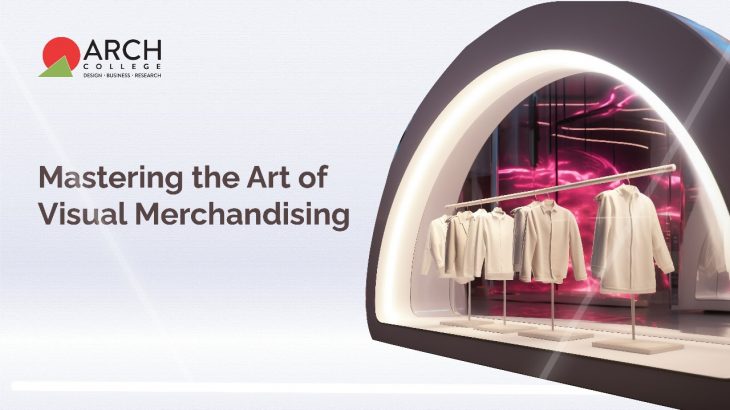Great displays don’t just catch your eye—they make you stop and buy! In a world where visuals capture our attention in an instant, the art of presenting products through impactful displays has become essential for brands. Visual merchandising goes far beyond arranging items on shelves or adding signs—it’s a strategic blend of creativity and psychology designed to attract customers, invite them into a space, and leave a lasting impression. When done effectively, visual merchandising not only draws people in but also drives sales, guiding customer choices and creating memorable shopping experiences. Here’s how you can master this essential skill in retail.
What is Visual merchandising?
Visual merchandising is the art and practice of designing in-store (or online) displays and layouts that capture customers’ attention and elevate their shopping experience. It’s all about crafting a captivating brand story and guiding customers on a journey where products are easily discoverable and decisions are made effortlessly. The main objectives? To draw in potential buyers, strengthen brand identity, and ultimately boost sales.
Consider this example: Imagine walking into a high-end coffee shop. The layout flows naturally, with cosy seating areas that draw you into the space. The earthy colours and dim, warm lighting create a calming environment, while well-placed signage gently directs you to seasonal blends and featured roasts. A strategically arranged shelf of mugs, coffee beans, and brewing kits invites you to browse and imagine bringing a piece of that coffee experience home. The entire setup is purposeful and visually engaging, encouraging you to explore, linger, and make a purchase.

This experience is achieved by combining essential elements of visual merchandising—such as layout, color, lighting, signage, and props—each playing a part in crafting an inviting, emotionally resonant atmosphere that is both functional and inspiring. When these elements work together, they do more than display products; they create an experience that connects with customers and enhances their journey.
Core Principles of Effective Visual Merchandising
A strong focal point
A focal point is a central display or feature designed to immediately draw customers’ attention. Its purpose is to capture interest quickly and direct customers to something noteworthy, like a new product line, seasonal collection, or exclusive offer.

For example, in a fashion store, a prominently placed mannequin dressed in the latest collection stands right at the entrance, making it easy for customers to spot fresh arrivals as soon as they walk in. This strategic setup helps engage customers from the moment they enter, guiding their focus and sparking curiosity to explore further.

Balance and symmetry in visual merchandising involve arranging products in a way that creates visual harmony, using either symmetrical (even) or asymmetrical (dynamic) layouts. This principle ensures that displays are easy on the eyes and feel intuitively ordered, guiding customers naturally from one product to the next. For example, in a cosmetic store, high-end skincare products might be symmetrically aligned in neat rows on well-lit shelves. The warm lighting softens the ambience, highlighting each product and creating a serene, inviting atmosphere that encourages customers to browse.
Why is storytelling important in a retail display?
Storytelling in visual merchandising involves creating a narrative around products to make them feel essential, relatable, and even aspirational. For example, during the holiday season, might showcase cosy blankets, mugs, and candles set against a backdrop of frosted windows and warm, glowing lights. This setup evokes the warmth and comfort of a quiet winter evening, inviting customers to picture these items enhancing their own homes. By tapping into the senses and setting a mood, storytelling makes products more than just items on a shelf—they become part of a larger experience, making customers feel as though they are not only purchasing a product but also a piece of that story.

Strategic Space, Layout, and Product Grouping
The use of space and layout is essential in guiding customers smoothly through a store, enhancing their shopping experience. A free-flow layout in a high-end boutique encourages exploration by allowing customers to wander freely, discovering products at their own pace. Within this space, strategically placed and grouped products—such as outfits paired with matching accessories—help customers visualize complete looks and make purchasing decisions easier.
Does the placement of graphics and signage optimize foot traffic flow?
Signage and graphics communicate product details, and promotions, and reinforce the brand’s personality. For example, a bookstore might use a simple wooden sign labelled “Best-Sellers” to attract attention to popular books, while minimalistic graphics—such as subtle book illustrations—help to maintain the cosy, literary atmosphere of the store. This directs customers to specific sections and strengthens the store’s identity, ensuring the overall design feels cohesive and aligned with the brand’s message.

Guiding Customer Choices with Visual Elements in E-Commerce
Digital visual merchandising plays a vital role in e-commerce by shaping how customers perceive products online. Optimizing product pages is crucial—high-quality images, clean layouts, and detailed descriptions allow customers to better understand and envision the products in their own lives. Curated online displays, such as “shop-the-look” features, group complementary items together, creating a more immersive shopping experience and encouraging customers to explore related products. Additionally, maintaining visual consistency across all platforms, from websites to social media and email marketing, strengthens brand recognition and builds trust, ensuring a seamless and cohesive brand experience for the customer.
In summary, visual merchandising is a powerful tool that can significantly enhance the customer experience, both in physical stores and in e-commerce environments. At our college, we are committed to equipping students with the knowledge and skills to master visual merchandising. Through practical learning and expert guidance, we ensure that our students understand how to apply these principles in real-world settings, both offline and online. Be a part of our community, and start your journey to becoming an expert in design and retail. Join us today!
